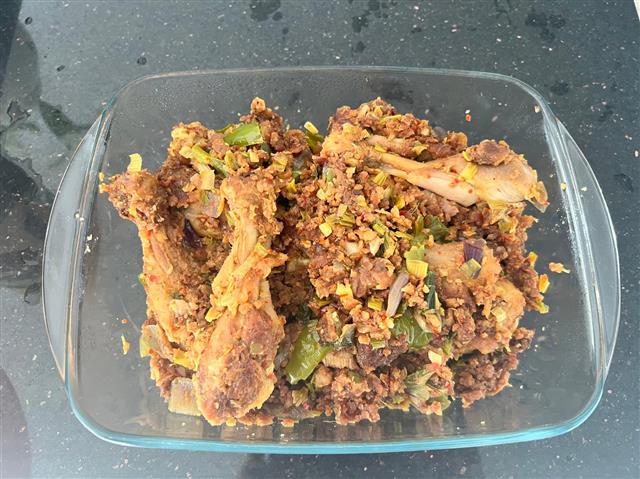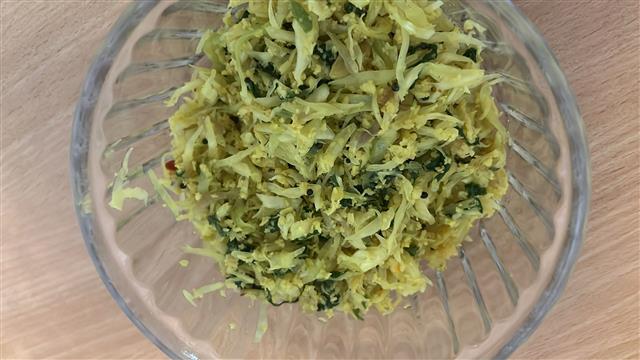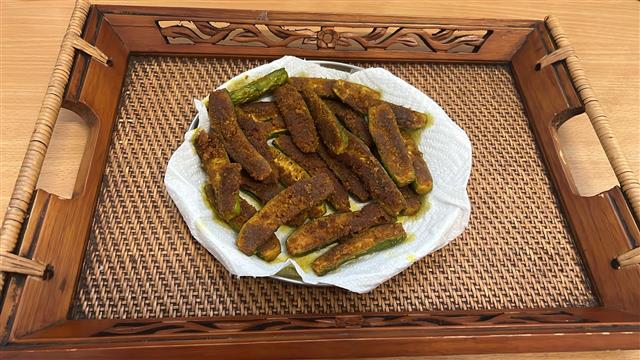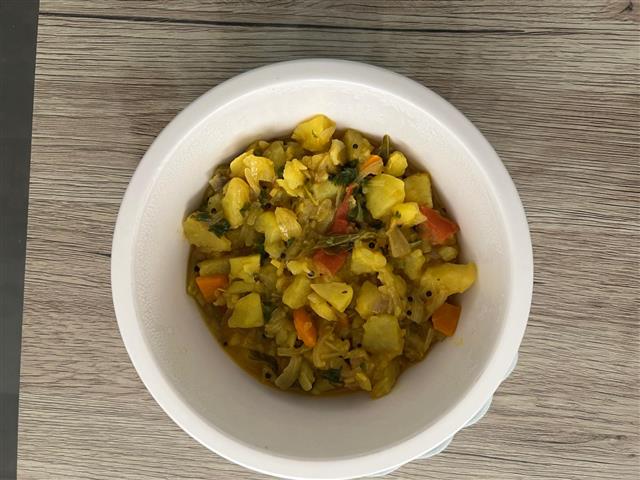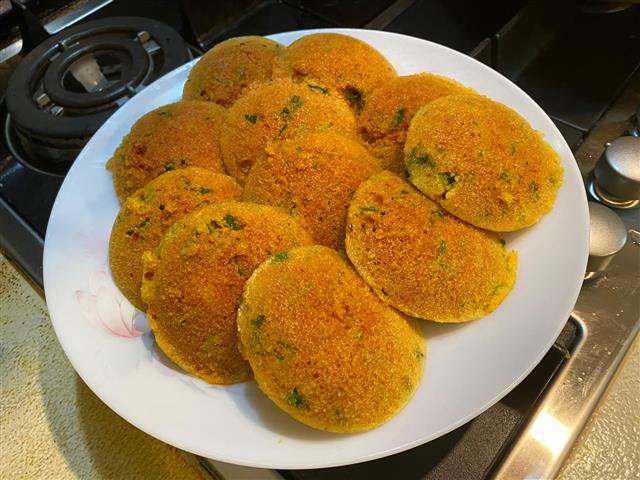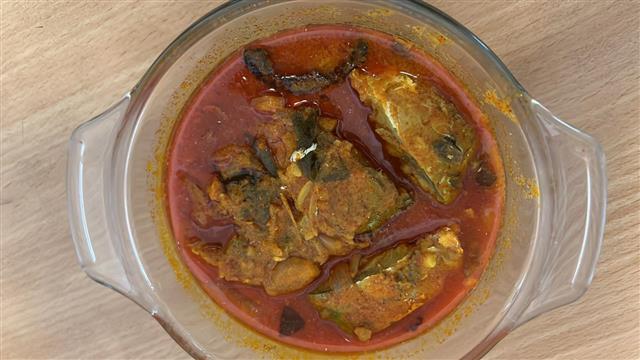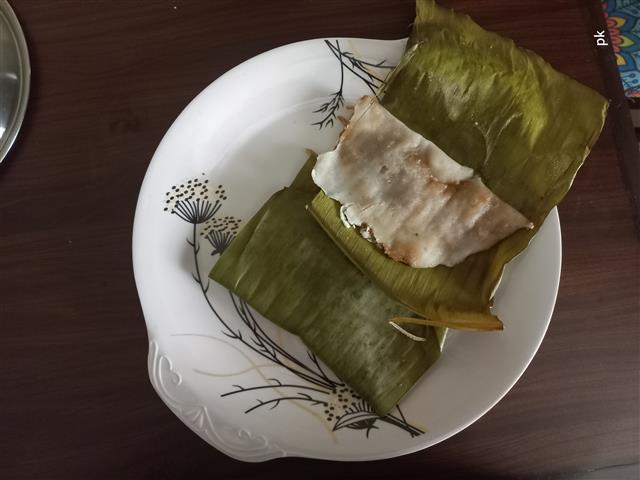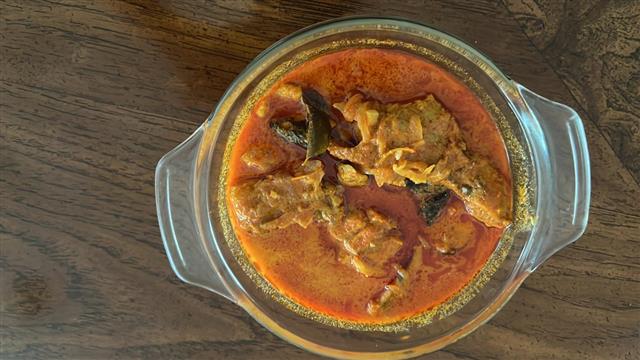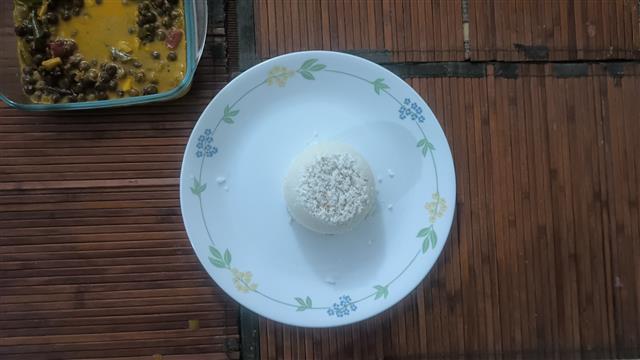
Cheera Thoran
(4 reviews)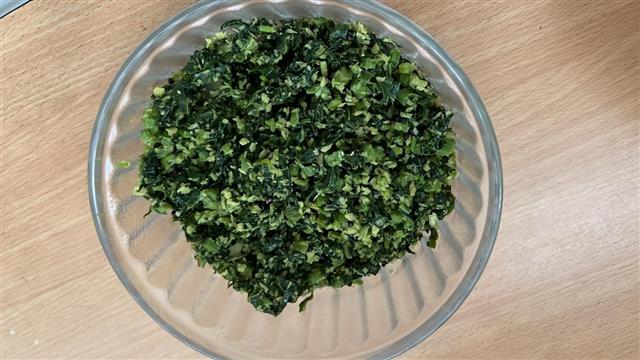
Cheera Thoran is a dry Kerala stir-fry made with red spinach or amaranth leaves, coconut, green chilli, cumin, and shallots.
This mild, earthy dish is packed with nutrition and adds colour and fibre to your plate.
It's a common vegetable side served with rice and curry. Also cooked during festival meals and paired with chapati for a simple but tasty lunch box meal.
Ingredients
Directions
- Wash and chop the red spinach into small pieces. . heat mustard seeds in oil add the mix and close the lid and cook. when the spinach are cooked open the lid and saute
- Make the coconut mix: Crush the grated coconut with cumin seeds, green chilli, and shallots using a mortar or mix by hand.
- Add the coconut mixture, curry leaves, and salt directly to the chopped spinach. Toss well.
- In a pan, heat coconut oil. Add mustard seeds and let them splutter. Add the spinach mixture, mix gently, and cover with a lid.
- Cook on low heat until the spinach softens. Open the lid and sauté for 1–2 more minutes until dry. Serve warm.
Cooking Tips
• Wash the red spinach thoroughly to remove all the mud. Soak in water and rinse a few times before chopping.
• Use tender leaves and stems. Thick, older stems can be stringy, so discard or chop them finely.
• Mix the coconut, cumin, green chilli, and shallots before adding to the spinach. This spreads flavour evenly.
• Cover and cook on low flame. The spinach will release water and steam itself.
• Don't add extra water. The moisture from the leaves is enough to cook them fully.
How to Serve
• Pair with hot rice or chapati
• Alongside curry, sambar, or rasam.
• With kanji (rice gruel) for a light and wholesome meal.
The Story Behind Cheera Thoran
Green or Red spinach (Cheera or Amaranth) has been grown in India for centuries. It's native to the subcontinent, and you will find it in most rural home gardens in Kerala.
Cheera grows easily even in small patches of soil, making it one of the most accessible and affordable leafy greens. It's also deeply rooted in traditional farming, often grown alongside rice or bananas.
In Kerala, cheera thoran is one of the most common ways to eat this leafy green. It's quick to cook, pairs well with rice, and needs minimal ingredients. It's also a dish many people associate with their childhood, and often served with parippu curry during the rainy season.
What Is Cheera Thoran?
Cheera Thoran is made with red or green amaranth, called cheera in Malayalam. The leaves are chopped and gently cooked with grated coconut, green chilli, crushed cumin seeds, and shallots. There's no grinding involved as everything is mixed together and pan cooked with a simple tempering of mustard seeds and coconut oil.
It's a dry, lightly seasoned side dish that focuses on the natural taste of the amaranth or spinach. The coconut gives richness, the cumin adds warmth, and the chilli brings just enough heat to balance the greens. Some versions also use garlic or curry leaves for added aroma.
When I started experimenting with vegetable dishes, this was one of the first ones I tried. It was simple enough to follow, but I still worried about overcooking the leaves or using too little coconut. It took a couple of tries to figure out how little water red spinach needs and how much flavour a small handful of shallots can bring.
Nowadays, I love cooking this one for the kids, especially when I want to add more greens to their diet.
Kerala Regional Variations
Central Kerala Coconut is always included. Curry leaves are often crushed along with the coconut mix. Some families add a clove of garlic or a piece of ginger for aroma. The spinach is steamed first, then sautéed gently.
Northern Kerala
In the Malabar region, cheera thoran is spicier. They add red chilli flakes or crushed black pepper instead of green chilli. Garlic is more common here, and the coconut may be fried lightly before adding.
Southern Kerala
The Trivandrum style is very simple. Sometimes there's no tempering at all — just coconut, chilli, and the greens. A dash of turmeric is sometimes added for colour. No garlic or onion is used in many homes.
Regional Variations
Tamil Nadu A similar dish is made with green amaranth (keerai poriyal), usually with mustard seeds, urad dal, and red chillies. Grated coconut is sometimes added. Onion is more common in their version.
Karnataka Red amaranth is stir-fried with garlic, green chilli, and mustard seeds. It's often made plain without coconut and served with ragi mudde or rice.
Ingredient Spotlight
Red Spinach (Cheera)
This leafy green is packed with iron, calcium, and vitamin A. It's great for blood health, skin, and bones. Red amaranth is also rich in antioxidants, especially betalains, which help reduce inflammation. It's low in calories but high in fibre, making it great for digestion too.
Grated Coconut
Fresh coconut adds richness and moisture. It also cools the body, which pairs well with the warmth of the cumin and chilli.
Shallots
They give a subtle sweetness and round off the earthiness of the spinach. In thoran dishes, shallots are more traditional than onions.
Cumin Seeds
These are lightly crushed and added to the coconut mix. They help digestion and add a gentle depth of flavour.
Pro Tips for Perfect Results
→ Wash spinach very well. Cheera and other greens have dirt clinging tot he stems. Soak and rinse well.
→ Use tender leaves. Avoid thick stems unless chopped fine. Young spinach gives a better texture and colour.
→ Keep the flame low while cooking. This preserves the colour and ensures a properly cooked red amaranth thoran.
→ Use fresh coconut for best taste. Store bought dessicated coconut doesn't add the same taste or texture. and fluff before adding.
→ Don't stir too much while cooking. Let it steam gently, then toss just once or twice at the end.
Cheera Thoran Variations
- With Garlic
Add crushed garlic to the coconut mixture for extra aroma. This is common in northern Kerala.
- Make it spicier
Use red chilli flakes or a pinch of black pepper.
- For a festive version
Skip shallots and garlic completely and use just coconut, cumin, and green chilli.
- Add cooked cherupayar (green gram)
For a more filling variation. This also adds protein.
- Use turmeric
To add health benefits and colour .
Diet-Friendly Adaptations
Vegan and gluten-free
No changes needed.
Low Fat
Use very little oil or skip it altogether for a low-fat version. Just dry roast the mustard seeds if needed. Coconut can be reduced or removed if watching fat intake. Use extra shallots or a spoon of moong dal for texture.
Storing & Reheating Tips
→ Fridge: Store in the fridge for 2 to 3 days in an airtight container.
→ Reheat: Heat gently in a pan. Avoid adding water.
→ Freeze: Do not freeze. Red spinach loses colour and becomes watery when thawed.
Common Mistakes to Avoid
→ Adding water while cooking. Spinach already releases water. Extra water makes it soggy.
→ Using thick stems. These don't cook down well and spoil the texture. Save these to make a vegetable broth or soup base.
→ Overcooking. Red spinach loses colour and nutrition if cooked too long.
→ Skipping the tempering. This small step adds in aroma and completes the flavour.
Frequently Asked Questions
- Can I use green spinach instead?
Yes. The flavour will be different, but it works well.
- Is this spicy?
It's mild. You can add more chilli if you want heat.
- Can I skip coconut?
Yes, but the dish will be plain. Try adding garlic or dal powder (parupu podi) instead.
- Can I make it ahead of time?
Yes. Make and store in the fridge for 1 to 2 days.
Equipment Needed
→ Flat pan with a lid
→ Knife and cutting board
→ Bowl to mix the coconut and spices
→ Wooden spatula
